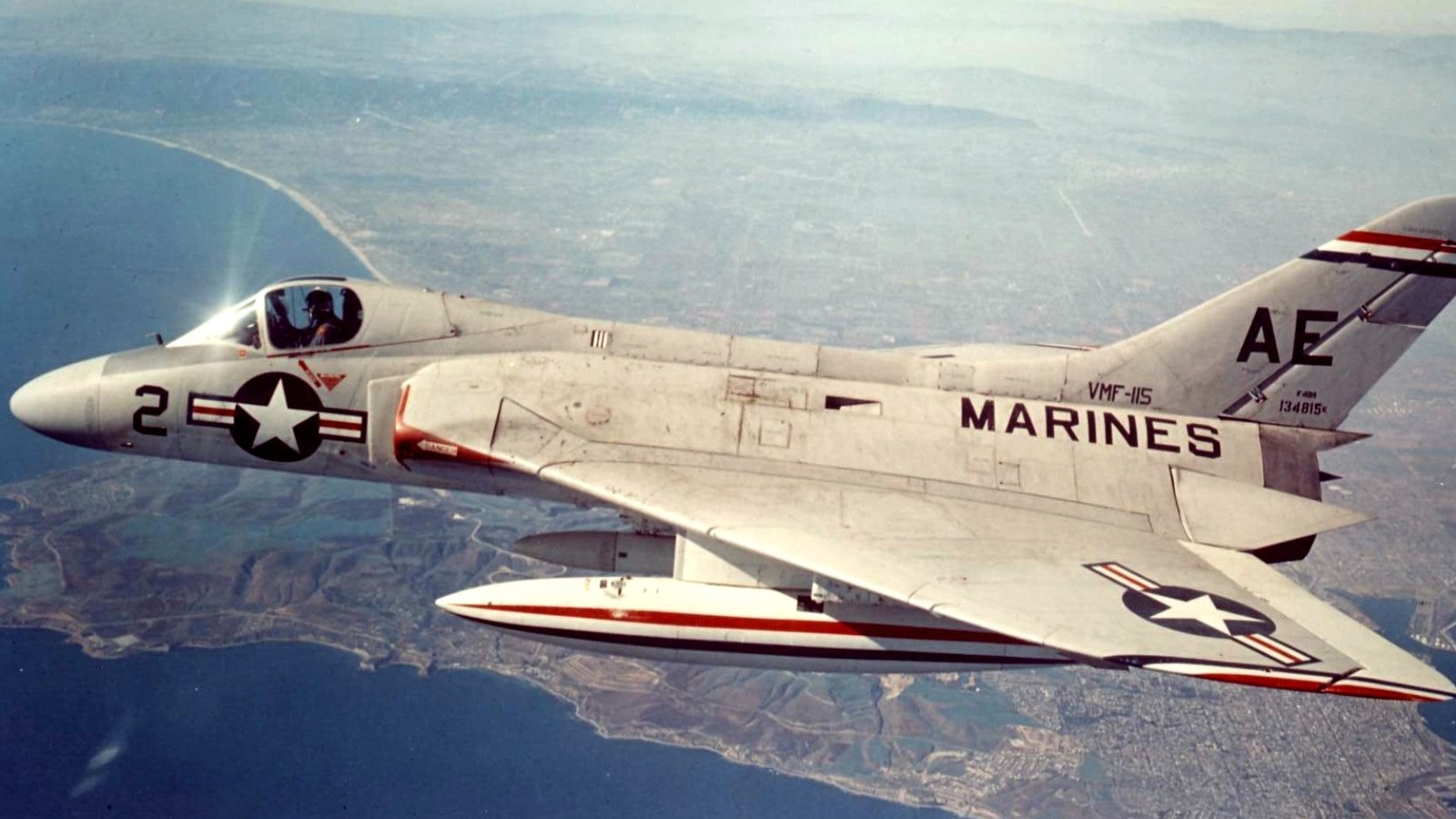![]()
Pace and maneuverability are advantages that can prove vital in aerial combat and were exactly how the Me 262 excelled in its limited encounters with Allied aircraft. Key to this was a discovery made by German engineers during its development: delta wings were best suited to withstand the strains of jet-propelled flight.
In 1948, Douglas began work on the F4D-1, which would implement this design concept. It derived its nickname from the characteristic ray-esque shape of its wings, and it had a tremendous task ahead of it. As Enzo Angelucci and Peter Bowers write in “The American Fighter” (via Internet Archive), the US Navy’s requirement was for “a short-range, carrier-based delta-wing interceptor fighter, able to shoot down an enemy aircraft at 50,000 feet (15,240 meters) within five minutes of hitting the alarm bell.”
The engine intended for use in the aircraft, the Westinghouse XJ40-WE-8, was also technology in progress, so prototype models could not perform at their full potential. Nonetheless, on completion, the Skyray proved to be formidable. The finished model was equipped instead with the Pratt & Whitney J57-P-8. Though this wasn’t the initial plan, this was critical to the Skyray’s fantastic performance. In late May of 1958, Major N. Le Faivre took just 2 minutes and 36 seconds to climb to 49,221 feet (15,000 meters), breaking several world speed records.
For all the latest Gaming News Click Here
For the latest news and updates, follow us on Google News.

